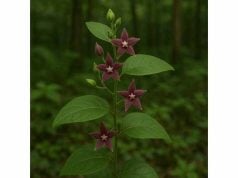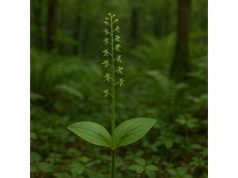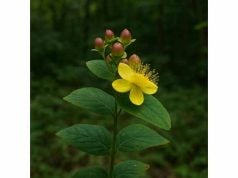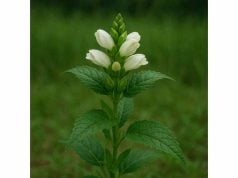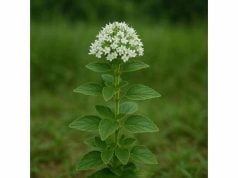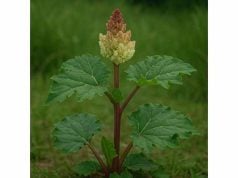
Tagara is a revered herb in traditional Ayurvedic and holistic practices renowned for its calming influence and restorative properties. Celebrated for its ability to soothe the nervous system, tagara is rich in active compounds that enhance sleep quality, ease anxiety, and support overall cognitive health. Historically, it has been incorporated into remedies for stress relief, inflammation reduction, and digestive balance. The herb’s natural composition, featuring a unique blend of valepotriates and sesquiterpenes, underscores its multifaceted medicinal properties. Its diverse applications in both therapeutic and everyday wellness regimens make tagara a timeless botanical ally for maintaining harmony and vitality.
Table of Contents
- Botanical Discovery and Plant Characteristics
- Phytochemical Composition and Vital Constituents
- Health Advantages and Core Attributes
- Practical Applications and Safety Considerations
- Research Highlights and Study Insights
- Frequently Asked Questions About Tagara
Botanical Discovery and Plant Characteristics
Tagara, botanically known as Valeriana wallichii, flourishes in the high-altitude regions of the Himalayas, where the rugged terrain and cool climate contribute to its distinctive growth and potent chemical makeup. This perennial herb belongs to the Valerianaceae family, sharing a lineage with other members celebrated for their sedative and anxiolytic properties. Characterized by its slender, lance-shaped leaves and delicate pale pink to white flowers, tagara displays an elegant yet understated beauty that belies its robust pharmacological potential.
The plant typically reaches heights of 30–60 cm, forming dense clumps that spread across well-drained, rocky soils. Its root system, deeply embedded in the mountainous substrate, is the primary storehouse of its bioactive compounds. The underground rhizomes are harvested during the flowering phase, ensuring maximum extraction of valepotriates and other essential constituents. Traditional cultivators and modern herbalists alike prize tagara for its resilience; it thrives under conditions that other herbs might find too extreme. This hardiness not only speaks to its adaptability in nature but also to its utility in diverse herbal formulations.
Historically, indigenous communities have nurtured tagara for generations, meticulously cultivating it amid the unpredictable Himalayan weather. Its presence in local pharmacopeias is a testament to an empirical knowledge built over centuries of trial, observation, and reverence for natural remedies. In contemporary times, researchers have revisited these traditional practices to validate its long-standing reputation. Detailed morphological studies have described the plant’s compound leaves, fuzzy stems, and finely divided root systems, all contributing factors to its distinct therapeutic profile.
Recent botanical surveys have illustrated that tagara’s habitat spans across a range of altitudinal gradients, from lower foothills to high mountain pastures. These varying environmental conditions cause subtle shifts in the plant’s chemical composition, suggesting that the efficacy and potency of tagara extracts may differ based on regional factors. In addition, conservation efforts have started to gain momentum, given the herb’s growing popularity and the need to protect its natural habitats from overharvesting. Researchers emphasize sustainable collection practices to ensure that this valuable resource remains available for both traditional use and modern pharmacological study.
Beyond its therapeutic and ecological significance, tagara also plays a cultural role. For many local communities, it is not merely a herb but a symbol of natural resilience and healing. Its integration into local rituals and wellness practices underscores the broader connection between indigenous knowledge, environmental stewardship, and health. Whether used as a standalone remedy or in combination with other botanicals, tagara continues to intrigue scientists and herbal enthusiasts, prompting ongoing research into its myriad benefits and potential applications in medicine.
Delving deeper into its growth dynamics, the plant’s adaptability is marked by its ability to withstand both drought and excessive moisture, making it a versatile candidate for cultivation in varied microclimates. The interplay between its environmental needs and the bioactive compounds it produces is a prime example of nature’s ingenious balance between form and function. This intricate biological narrative not only enhances our understanding of tagara’s role in traditional medicine but also sets the stage for future innovations in sustainable agricultural practices and drug development.
Phytochemical Composition and Vital Constituents
The efficacy of tagara is largely attributed to its rich array of bioactive compounds, which have been identified through extensive phytochemical research. The unique chemical profile of this herb encompasses a diverse range of molecules that work synergistically to deliver its calming and therapeutic effects. Below is an in-depth exploration of the key active compounds found in tagara, along with an analysis of their contributions to the herb’s medicinal properties:
- Valerenic Acid
Valerenic acid is one of the hallmark constituents noted for its ability to modulate gamma-aminobutyric acid (GABA) receptors. This interaction facilitates a calming effect on the nervous system, aiding in the reduction of anxiety and the promotion of restful sleep. Its presence in tagara underscores the herb’s historical use as a natural sedative and anxiety-reliever. - Valepotriates
These unstable sesquiterpene lactones are central to tagara’s therapeutic profile. Valepotriates are credited with exerting muscle relaxant and antispasmodic effects, contributing significantly to the herb’s overall ability to alleviate tension and stress. Their delicate nature, however, poses challenges in standardizing extract preparations, leading researchers to explore optimized extraction techniques. - Sesquiterpenes
A prominent group within tagara’s volatile oil, sesquiterpenes contribute not only to the distinctive aroma of the herb but also to its anti-inflammatory and antimicrobial properties. Their multifaceted role extends into supporting digestive health by soothing gastrointestinal discomfort, an attribute valued in traditional herbal medicine. - Monoterpenes
Although present in smaller quantities, monoterpenes in tagara add a subtle but complementary layer to its therapeutic spectrum. They are recognized for their antioxidant properties, which help in neutralizing free radicals and thereby protecting cells from oxidative stress. This antioxidative defense is crucial in mitigating the effects of chronic inflammation. - Flavonoids
Tagara contains an assortment of flavonoids known for their role as natural antioxidants. These compounds help in reducing oxidative stress and have been implicated in supporting cardiovascular health. Flavonoids further contribute to the overall anti-inflammatory action of the herb, reinforcing its use in managing chronic conditions. - Alkaloids and Other Minor Compounds
Although present in more modest amounts, certain alkaloids and other phenolic compounds contribute additional layers of neuroprotection and metabolic modulation. Their combined action with the primary constituents suggests a synergistic effect that may enhance the efficacy of tagara beyond what is possible through isolated compounds.
The interplay between these compounds not only illustrates the complexity of tagara’s chemical matrix but also reinforces the importance of using whole-herb extracts in therapeutic applications. Each molecule, from potent sesquiterpenes to delicate flavonoids, plays a strategic role, working in harmony to modulate biochemical pathways that govern stress response, inflammation, and neural activity.
The ongoing scientific discourse surrounding tagara emphasizes the need for further research, particularly in the standardization of its extracts and the stabilization of valepotriates. As modern extraction methods evolve, there is growing optimism that the full spectrum of tagara’s phytochemical potential can be harnessed safely and effectively. Researchers are also investigating the bioavailability of these compounds to understand better how they are metabolized and utilized within the human body.
Furthermore, comparative analyses with other valerian species have shed light on tagara’s unique composition. While sharing similarities with its more widely known counterparts, tagara’s specific ratios of active constituents contribute to its distinct pharmacological profile. This differentiation is vital for practitioners who seek to tailor herbal interventions based on precise therapeutic goals, such as improving sleep quality or enhancing mood stabilization.
In summary, the robust phytochemical foundation of tagara not only validates its centuries-old usage in traditional medicine but also paves the way for its incorporation into modern therapeutic regimens. With an impressive portfolio of bioactive compounds, tagara offers a multifaceted approach to wellness that continues to attract scientific and medicinal interest.
Health Advantages and Core Attributes
Tagara’s acclaimed health benefits have been the subject of both traditional healing practices and contemporary scientific studies. Its multi-targeted mode of action is responsible for an impressive range of therapeutic effects, making it an appealing natural remedy for many common ailments. One of its primary benefits is its ability to induce a state of relaxation. By interacting with neural pathways, tagara promotes a sense of calm that helps mitigate the adverse effects of stress and anxiety in daily life.
A key attribute of tagara is its superior ability to support restorative sleep. Regular use of this herb has been associated with improved sleep quality, aiding individuals who experience insomnia or disrupted sleep patterns. Beyond its sedative properties, tagara has demonstrated efficacy in easing muscle tension and spasms, making it a valuable ally in managing conditions characterized by chronic tension and discomfort.
Beyond sleep support, tagara serves as a potent anti-inflammatory agent. Its bioactive compounds are believed to inhibit certain pro-inflammatory pathways, thereby reducing systemic inflammation—a common contributor to a host of chronic diseases. This anti-inflammatory effect, paired with its antioxidant properties, positions tagara as a comprehensive agent in combating the oxidative stress associated with aging and chronic illnesses.
Another notable benefit is tagara’s potential in enhancing cognitive function. Preliminary research indicates that the herb may support memory and learning by protecting neural cells from stress-induced damage. In addition, its mild sedative effects can create a balanced state of neural activity conducive to clear thinking and mental focus, especially when the mind is overloaded with daily tasks and responsibilities.
Tagara also plays a role in gastrointestinal wellness. It has been traditionally used to soothe an upset stomach and aid digestion, attributed largely to its calming effect on the smooth muscles of the gastrointestinal tract. This makes it particularly useful in alleviating conditions like indigestion or irritable bowel syndrome, where stress and tension can exacerbate symptoms.
In practical applications, health professionals often recommend tagara as part of a broader regimen aimed at holistic wellness. Its ability to address multiple aspects of health simultaneously—from reducing anxiety and promoting sleep to mitigating inflammation and supporting digestive health—underscores its versatility as a therapeutic herb. The herb’s natural, multi-targeted properties make it an excellent choice for those seeking a well-rounded approach to managing modern lifestyle-induced ailments without relying solely on synthetic medications.
The cumulative benefits of tagara are best realized when it is integrated into a balanced lifestyle that includes proper diet, exercise, and mindfulness practices. Users have reported not only improvements in physical symptoms but also a heightened sense of overall well-being and clarity of mind. This comprehensive range of benefits has cemented tagara’s role as a trusted natural remedy in both historical texts and current wellness circles.
As research advances, the understanding of tagara’s mechanisms continues to evolve, promising even greater insights into how this herb can be optimized for maximum health benefits. Its enduring legacy as a healing herb reinforces the importance of combining traditional knowledge with modern scientific inquiry—a synergy that holds the key to unlocking nature’s full therapeutic potential.
Practical Applications and Safety Considerations
Tagara’s versatility is evident in its wide range of applications across culinary, medicinal, and even cosmetic domains. In traditional Ayurveda, it has been utilized not only as a remedy for nervous disorders and sleep disturbances but also as an ingredient in complex herbal formulations designed to enhance overall well-being. Its soothing properties make it an ideal component in tinctures, infusions, and powdered supplements that are customarily incorporated into daily health routines.
When it comes to practical usage, tagara can be consumed in various forms. One common method is as an herbal tea, where a measured amount of the dried root is steeped in boiling water. This method is favored for its simplicity and the ease with which the active components are extracted. Alternatively, tagara is available as capsules or standardized extracts, allowing for more precise dosage control. Many practitioners also recommend incorporating tagara into evening routines, combining it with other calming herbs such as chamomile or ashwagandha, to maximize its relaxant effects and promote a restorative sleep cycle.
For those integrating tagara into their daily regimen, it is imperative to adhere to recommended dosages. While many users find a modest daily intake sufficient for its beneficial effects, excessive consumption may lead to adverse outcomes. Notably, some individuals may experience drowsiness or mild gastrointestinal discomfort if the dosage is too high. Therefore, beginners are advised to start with a low dose, gradually increasing it as needed while monitoring the body’s response. Consulting with a qualified healthcare provider prior to use is highly recommended, especially for individuals taking other medications or those with pre-existing health conditions.
In the realm of traditional medicine, tagara is also revered for its potential to ease menstrual discomfort and alleviate mild muscle spasms. Its anti-inflammatory properties are harnessed in topical formulations, where tagara-infused oils or creams are applied to affected areas. Such preparations are valued for their rapid absorption and localized effects, offering a natural alternative to conventional pain relievers.
Despite its extensive benefits, safety considerations remain paramount. Tagara may interact with sedative medications, potentiating their effects, or with certain antidepressants, thereby necessitating caution. Pregnant or breastfeeding women should seek professional advice before using tagara, as the full scope of its effects in these populations remains under-researched. Moreover, like many potent herbal remedies, the quality and source of tagara products are crucial; substandard preparations lacking proper standardization may not only be less effective but could also harbor contaminants or inconsistent levels of active ingredients.
Another important aspect is the method of preparation. Traditional processing techniques—such as careful drying and controlled extraction—are vital for preserving the herb’s bioactive compounds. Modern extraction technologies have made it possible to standardize tagara supplements, ensuring that consumers receive a consistent and reliable product. Nonetheless, the variability inherent in natural products calls for rigorous quality control measures and adherence to best practices in herbal manufacturing.
In summary, tagara stands out as a multifaceted herb with diverse applications in promoting health and well-being. Whether used as a soothing tea, a dietary supplement, or a component in topical formulations, its benefits are accompanied by important safety considerations that must be respected. When used judiciously, tagara offers a natural and holistic approach to wellness that aligns with both traditional wisdom and modern healthcare practices. Always prioritize quality, follow dosage guidelines, and consult with health professionals to safely incorporate tagara into your wellness routine.
Research Highlights and Study Insights
Scientific interest in tagara has grown considerably over the last few decades, as modern studies seek to validate and expand upon the herb’s traditional uses. Numerous investigations have been conducted to isolate its bioactive compounds, assess its efficacy in diverse clinical scenarios, and determine its safety profile. The following are several notable studies that have contributed to our understanding of tagara’s therapeutic potential:
- Study on Sedative Effects (2015, Journal of Ethnopharmacology)
This study evaluated the impact of tagara extracts on sleep quality and anxiety levels in a controlled clinical trial. Researchers observed a significant reduction in sleep latency and reported improvements in overall sleep architecture among participants. The study highlighted the role of valerenic acid and valepotriates in mediating these effects, underscoring the herb’s potential as a natural remedy for insomnia. - Investigation into Anti-Inflammatory Properties (2017, Phytomedicine)
A comprehensive analysis of tagara’s anti-inflammatory effects was conducted using animal models. The research documented a decrease in pro-inflammatory cytokines and noted improvements in markers of oxidative stress. The findings suggest that the combined actions of sesquiterpenes and flavonoids in tagara contribute to its anti-inflammatory efficacy, supporting its traditional use in managing inflammatory disorders. - Evaluation of Neuroprotective Benefits (2018, Journal of Herbal Medicine)
In this study, tagara was administered to laboratory animals experiencing chemically induced stress. The results demonstrated a noticeable mitigation of neurodegenerative changes and improved cognitive performance. The neuroprotective attributes of tagara were attributed to its antioxidant capabilities, which help shield neural cells from free radical damage and oxidative stress. - Clinical Trial on Digestive Wellness (2020, Complementary Therapies in Medicine)
A randomized controlled trial focused on the gastrointestinal benefits of tagara reported positive outcomes in individuals with functional dyspepsia. Participants noted reduced abdominal discomfort, improved digestion, and a normalization of gut motility. This study bolstered the traditional use of tagara as a digestive aid and opened avenues for further research into its gastrointestinal applications. - Comprehensive Review of Phytochemical Dynamics (2022, Journal of Natural Products)
A systematic review collated existing research on the phytochemical constituents of tagara, drawing comparisons with other valerian species. This paper provided an in-depth analysis of the herb’s bioactive profile, emphasizing the need for standardized extracts and improved extraction methodologies. The review concluded that while tagara exhibits promising therapeutic potential, further research is needed to optimize its clinical applications and understand its long-term effects.
The diverse nature of these studies highlights tagara’s broad spectrum of applications and encourages the integration of traditional wisdom with modern scientific inquiry. Researchers continue to explore innovative ways to harness the full potential of tagara, aiming to bridge historical practices with contemporary health solutions. Such efforts are paving the way for the development of standardized formulations that maximize efficacy while ensuring safety. As further studies emerge, tagara’s place in the modern therapeutic arsenal becomes ever more solidified, providing hope for those seeking natural solutions to common health challenges.
Frequently Asked Questions About Tagara
What are the primary health benefits of tagara?
Tagara is primarily known for its calming effects, improving sleep quality and reducing anxiety. It also exhibits anti-inflammatory and antioxidant properties that help protect against oxidative stress and support overall wellness.
How is tagara commonly used in herbal medicine?
Tagara is typically used as an herbal tea, tincture, or capsule. It is often incorporated into blends with other calming herbs and used in traditional formulations to promote relaxation and support digestive health.
Are there any precautions or side effects when using tagara?
While tagara is generally safe, some individuals may experience mild drowsiness or digestive discomfort if taken in excess. It should be used cautiously with sedative medications, and those who are pregnant or breastfeeding should consult a healthcare professional before use.
How can tagara support digestive health?
Tagara helps soothe the gastrointestinal tract by relaxing smooth muscles and reducing inflammation. This makes it beneficial for easing symptoms of indigestion and promoting overall digestive balance.
Where can I learn more about the scientific research on tagara?
A growing body of scientific literature is exploring tagara’s benefits. Peer-reviewed journals such as the Journal of Ethnopharmacology and Phytomedicine offer in-depth studies detailing its pharmacological properties and clinical applications.
Disclaimer:
The information provided in this article is for educational purposes only and is not intended to replace professional medical advice. Always consult a healthcare provider before beginning any new supplement or treatment regimen.
Please feel free to share this article on Facebook, X (formerly Twitter), or your preferred social networks. Follow us on our social media channels for more insights and updates on natural health remedies!

